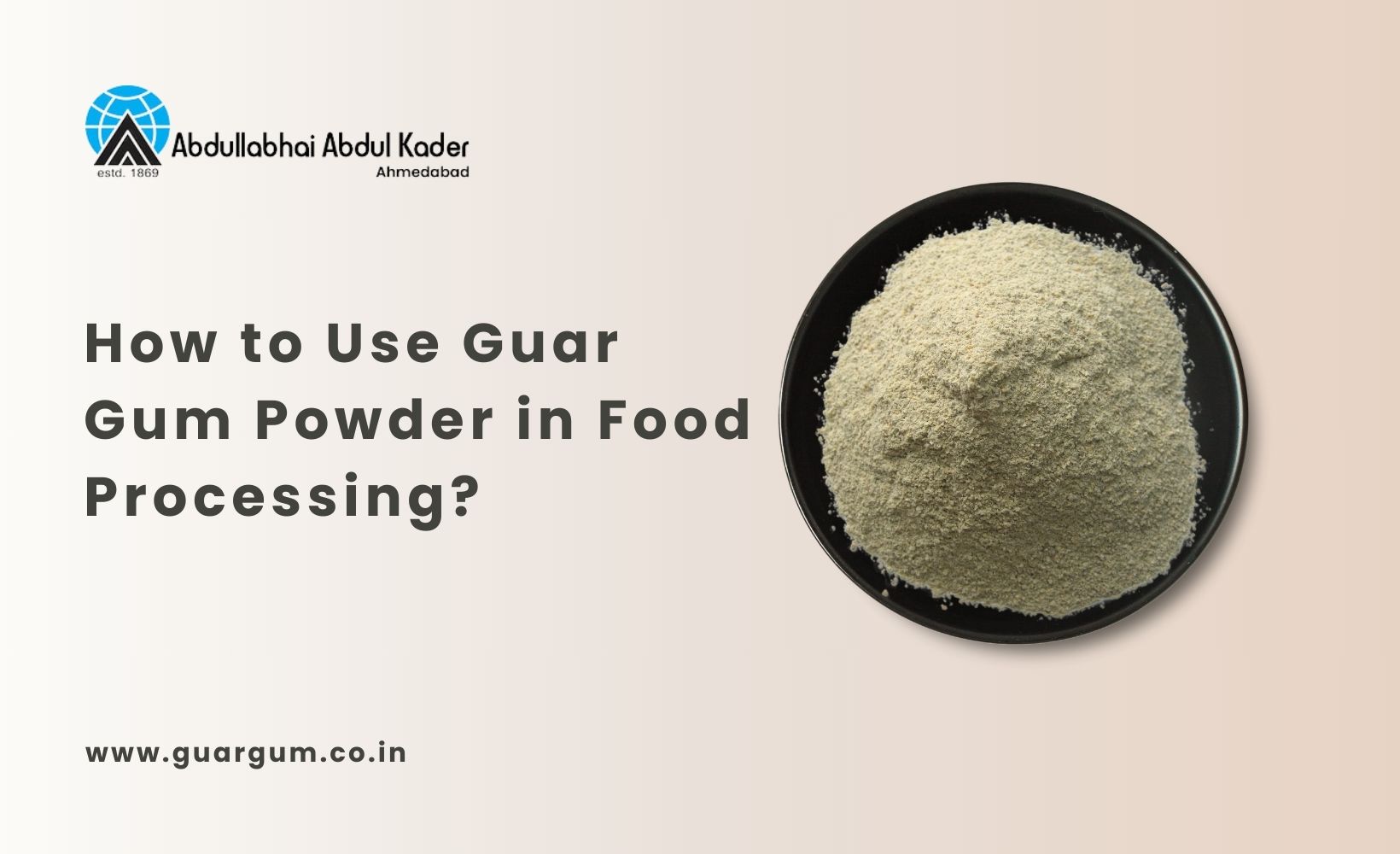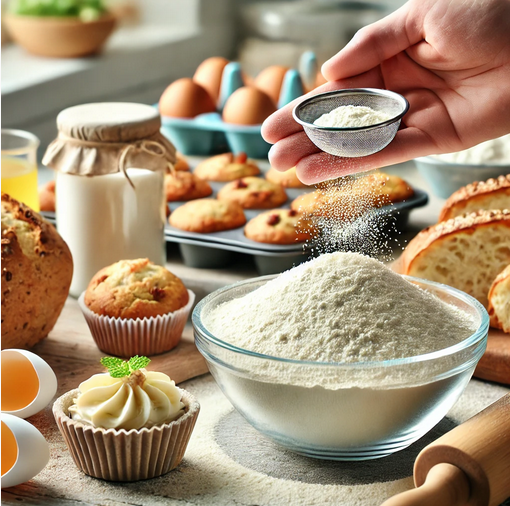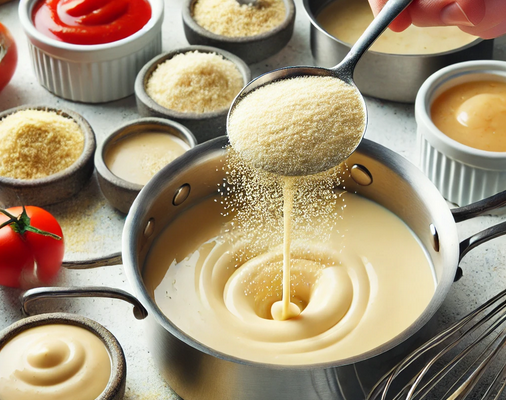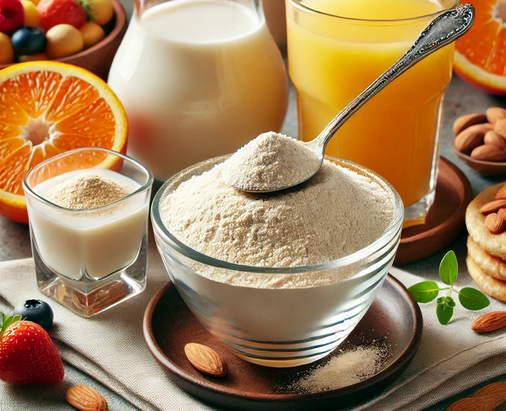
Introduction
Guar gum powder, derived from the seeds of the guar plant (Cyamopsis tetragonoloba), is a versatile hydrocolloid widely used in the food processing industry. Known for its thickening, gelling, and stabilizing properties, guar gum is an essential ingredient in a variety of food products. This article provides a comprehensive guide on how to effectively use guar gum powder in food processing, including its applications, benefits, and best practices for incorporation.
1. Understanding Guar Gum Powder
1.1. Chemical Composition and Properties
Guar gum is primarily composed of galactomannans, polysaccharides with a backbone of mannose units and side chains of galactose. The typical mannose-to-galactose ratio is around 5:1, which contributes to its thickening and gelling abilities. Guar gum is highly soluble in water and can form viscous solutions even at low concentrations. Its ability to swell and create a gel-like consistency makes it a valuable ingredient in food processing.
1.2. Types of Guar Gum
Guar gum powder is available in various forms, including:
- Regular Guar Gum: Standard form used in a range of food products for thickening and stabilizing.
- Fast Hydration Guar Gum: Designed for applications requiring rapid viscosity development.
- Organic Guar Gum: Sourced from organically grown guar plants, suitable for organic food products.
2. Applications in Food Processing

2.1. Bakery Products
In the bakery industry, guar gum powder is used to improve the texture, moisture retention, and shelf life of baked goods.
- Texture Improvement: Guar gum enhances the crumb structure of bread, muffins, and cakes, making them softer and more uniform.
- Moisture Retention: It helps retain moisture in bakery products, preventing them from becoming dry or stale. This is particularly important for products that are stored for extended periods.
- Binding Agent: Guar gum acts as a binding agent, improving the consistency and cohesiveness of dough.
2.2. Dairy Products
Guar gum is widely used in dairy products, including ice cream, yogurt, and cheese, to enhance texture and stability.
- Ice Cream: It improves the mouthfeel and creaminess of ice cream by preventing ice crystal formation and ensuring a smooth texture.
- Yogurt: Guar gum helps thicken yogurt and maintains its consistency, preventing whey separation and enhancing the overall texture.
- Cheese: In cheese production, guar gum can be used to improve the texture and prevent whey separation.

2.3. Sauces and Dressings
Guar gum is an excellent thickening agent for sauces, dressings, and gravies.
- Sauces: It provides a smooth and consistent texture, ensuring that sauces do not separate or become watery.
- Dressings: Guar gum helps to stabilize emulsions in dressings, preventing ingredients from separating and improving the overall texture.
2.4. Beverages
In the beverage industry, guar gum powder is used to modify the texture and consistency of drinks.
- Fruit Juices: Guar gum can be used to suspend fruit pulp and particulates in juices, ensuring a uniform consistency.
- Non-Dairy Milks: It improves the mouthfeel and stability of non-dairy milk alternatives, such as almond or soy milk.

2.5. Processed Foods
Guar gum is used in various processed foods to improve texture and consistency.
- Frozen Foods: It helps in maintaining the texture of frozen foods by preventing ice crystal formation.
- Instant Foods: Guar gum is used in instant food products, such as soups and noodles, to enhance viscosity and texture upon rehydration.
3. Benefits of Using Guar Gum Powder
3.1. Natural and Safe
Guar gum is a natural ingredient derived from a plant, making it a safe and acceptable optionfor health-conscious consumers. It is free from synthetic additives and preservatives, aligning with clean-label trends in the food industry.
3.2. Versatility
Its versatility allows it to be used in a wide range of food products, from baked goods to beverages, providing consistent results across various applications.
3.3. Cost-Effectiveness
Guar gum is relatively cost-effective compared to other thickening agents and stabilizers. Its ability to work effectively at low concentrations makes it a economical choice for food manufacturers.
3.4. Functional Benefits
Guar gum provides several functional benefits, including improving texture, moisture retention, and stability. These properties contribute to enhanced product quality and extended shelf life.
4. Best Practices for Using Guar Gum Powder
4.1. Proper Mixing
To achieve optimal results, guar gum powder should be properly mixed with other ingredients. It is essential to blend it thoroughly to avoid clumping and ensure even
distribution. Using a high-shear mixer or dispersing the powder in a small amount of water before adding it to the main mixture can help achieve a smooth consistency.
4.2. Dosage and Concentration
The effective dosage of guar gum powder depends on the specific application and desired properties. It is important to follow recommended guidelines and conduct trials to determine the optimal concentration for each product. Typically, guar gum is used at concentrations ranging from 0.1% to 1% of the total formulation.
4.3. Hydration Time
Allow sufficient time for guar gum powder to hydrate and develop its thickening properties. While fast hydration guar gum can achieve viscosity in minutes, regular guar gum may require more time. Proper hydration is crucial for achieving the desired texture and consistency.
4.4. Storage and Handling
Guar gum powder should be stored in a cool, dry place to maintain its quality and effectiveness. Proper handling is essential to avoid contamination and ensure that the powder remains free-flowing and easy to use.
Conclusion
Guar gum powder is a highly valuable ingredient in food processing, offering a range of benefits from improved texture to enhanced stability. Its applications across various food products demonstrate its versatility and effectiveness. By understanding how to properly use guar gum powder and adhering to best practices, food manufacturers can optimize produc quality and meet consumer expectations for texture, consistency, and overall performance. As the food industry continues to evolve, guar gum powder remains a reliable and natural solution for achieving high-quality food products.



